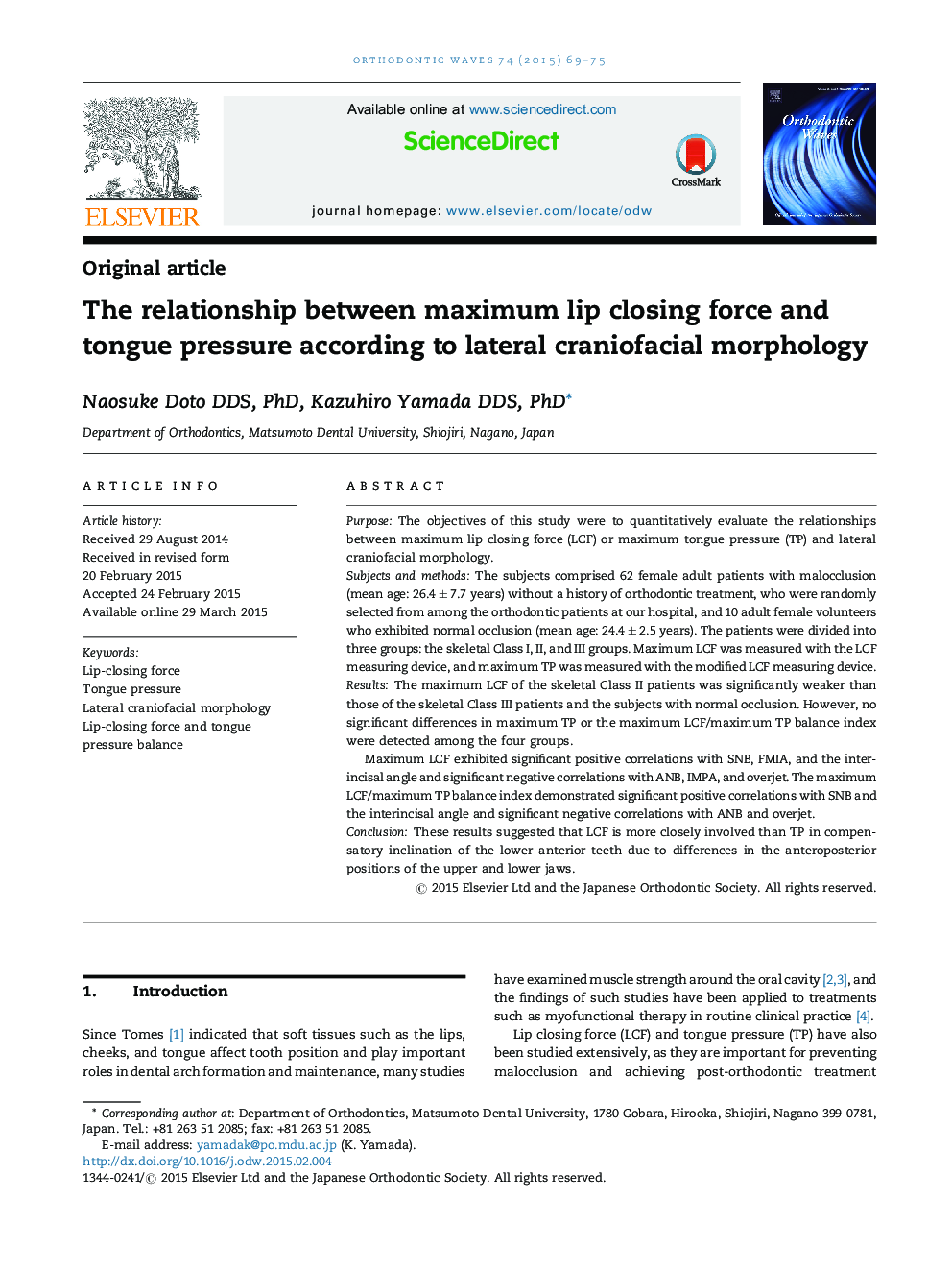| Article ID | Journal | Published Year | Pages | File Type |
|---|---|---|---|---|
| 3170301 | Orthodontic Waves | 2015 | 7 Pages |
PurposeThe objectives of this study were to quantitatively evaluate the relationships between maximum lip closing force (LCF) or maximum tongue pressure (TP) and lateral craniofacial morphology.Subjects and methodsThe subjects comprised 62 female adult patients with malocclusion (mean age: 26.4 ± 7.7 years) without a history of orthodontic treatment, who were randomly selected from among the orthodontic patients at our hospital, and 10 adult female volunteers who exhibited normal occlusion (mean age: 24.4 ± 2.5 years). The patients were divided into three groups: the skeletal Class I, II, and III groups. Maximum LCF was measured with the LCF measuring device, and maximum TP was measured with the modified LCF measuring device.ResultsThe maximum LCF of the skeletal Class II patients was significantly weaker than those of the skeletal Class III patients and the subjects with normal occlusion. However, no significant differences in maximum TP or the maximum LCF/maximum TP balance index were detected among the four groups.Maximum LCF exhibited significant positive correlations with SNB, FMIA, and the interincisal angle and significant negative correlations with ANB, IMPA, and overjet. The maximum LCF/maximum TP balance index demonstrated significant positive correlations with SNB and the interincisal angle and significant negative correlations with ANB and overjet.ConclusionThese results suggested that LCF is more closely involved than TP in compensatory inclination of the lower anterior teeth due to differences in the anteroposterior positions of the upper and lower jaws.
